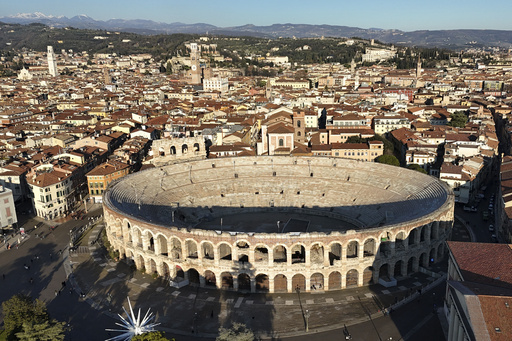CORTINA D’AMPEZZO, Italy — As the countdown begins for the opening ceremony of the 2026 Winter Olympics in Milan-Cortina, concerns are mounting over the progress of the sliding center construction. With only a year remaining until the games commence on February 6, the venue is still halfway through its building phase, raising alarms about the deadlines set by the International Olympic Committee (IOC).
Adding to the pressures, the IOC has mandated a contingency plan in case the construction delays continue, suggesting that if the Cortina track is not completed in time, the bobsled, luge, and skeleton events may be relocated to Lake Placid, New York. As the construction site remains chaotic with heavy machinery and workers, the IOC has specified a deadline by the end of next month for the pre-certification of the track, leaving the final status and readiness unclear.
Fabio Saldini, the government commissioner overseeing the project, insists that almost 70% of the track is complete, a claim that appears optimistic amidst the muddy site conditions. Currently, about 180 workers are laboring around the clock, and the first layer of ice is expected to be laid down by early March. “We have substantial support from construction companies and the government,” Saldini mentioned, expressing confidence in meeting the timeline despite challenges.
Since construction began under a year ago, the timeframe raises eyebrows, especially given the historical context of sliding tracks. The importance of upcoming test events, scheduled for October, intensifies due to safety concerns highlighted in recent Olympic history, especially following the tragic accident of Georgian luger Nodar Kumaritashvili ahead of the 2010 Vancouver Games.
While considering alternatives, Lake Placid emerged as a no-cost option for the IOC, which preferred venues in Austria or Switzerland that were operational. “We opted for Lake Placid since it came without the need for financial investment,” stated Andrea Varnier, the CEO of Milan-Cortina. Yet, both he and organizing committee president Giovanni Malagò stress that relocating events is merely a backup plan, emphasizing optimism for the events to proceed in Cortina.
Environmental arguments have gained traction against the reconstruction of the Cortina track, with protests surrounding the loss of around 800 trees. Saldini countered that while some trees may have historical significance, they plan to plant 10,000 new trees once the project concludes.
Should the relocation to Lake Placid become necessary, it would significantly alter the Olympic experience for ticket holders. Hospitality package provider On Location reported receiving a high volume of inquiries—62 countries participated—most interested in sports like ice hockey and figure skating. It recognizes the logistical adjustments that would follow a potential shift from Cortina’s luxury to upstate New York’s simpler backdrop.
The upcoming games will be the first to fully employ cost-saving initiatives introduced by IOC President Thomas Bach, largely relying on pre-existing sport venues scattered across northern Italy. Alpine skiing will take place in both Cortina and Bormio, with additional events scheduled in Livigno, Anterselva, Val di Fiemme, and Milan. Varnier acknowledged the complexity of coordinating activities among such widely spaced locations, citing the distinct governance of each region.
With a rich history of hosting significant winter sports events, these venues provide a strong foundation for the 2026 Games. For instance, Bormio was the site of Alpine skiing championships in 1985 and 2005, while Cortina has hosted over 100 World Cup races. However, for athletes such as Ester Ledecka, who excelled in both Alpine skiing and snowboarding in previous Olympics, the arrangement presents difficulties. In 2026, due to scheduling overlaps, she may be forced to prioritize one sport over another, complicating her chance for glory in both disciplines.
As the clock continues its relentless ticking towards the games, the hope remains that the Cortina sliding center will rise to meet the Olympic challenge, uniting a global audience in the spirit of competition and celebration.
